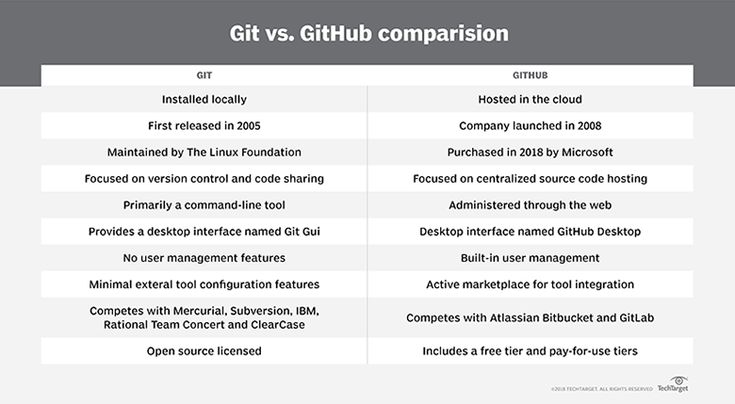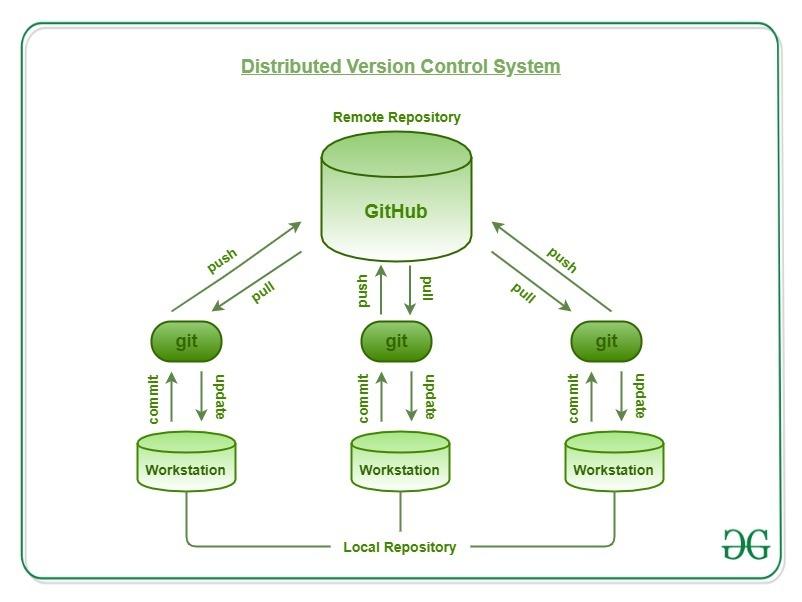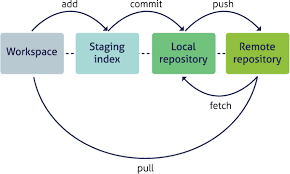Building Community
Raymond considers Linux's revolutionary aspects to be social, not technical: before Linux, complex software was designed carefully by small groups, but "Linux evolved in a completely different way. From nearly the beginning, it was rather casually hacked on by huge numbers of volunteers coordinating only through the Internet. Quality was maintained not by rigid standards or autocracy but by the naively simple strategy of releasing every week and getting feedback from hundreds of users within days, creating a sort of rapid Darwinian selection on the mutations introduced by developers."[91]
Conway's Law, a principle in software development and organizational theory, states that the structure of a software system will mirror the structure of the organization that built it. Essentially, the way teams communicate and collaborate will influence the design of the system.
Decentralized development – with developers located around the world – is fostered by the open-source ethos of knowledge sharing and peer participation.
Open Collaboration
Linux is one of the most widely used examples of free and open-source collaboration. Through the interoperability of open software modules, created by community developers, Linux is pieced together in many different ways. This creates an expansive open ecosystem where you can choose what software you use.
Commons based peer production
https://en.m.wikipedia.org/wiki/Commons-based_peer_production
No software is owned by one person and can be formed.
Cathedral and the Bazaar
https://en.m.wikipedia.org/wiki/The_Cathedral_and_the_Bazaar
The Cathedral and the Bazaar: Musings on Linux and Open Source by an Accidental Revolutionary (abbreviated CatB) is an essay, and later a book, by Eric S. Raymond on software engineering methods, based on his observations of the Linux kernel development process and his experiences managing an open source project, fetchmail. It examines the struggle between top-down and bottom-up design. The essay was first presented by Raymond at the Linux Kongress on May 27, 1997, in Würzburg, Germany, and was published as the second chapter of the same‑titled book in 1999.
The software essay contrasts two different free software development models:
- The cathedral model, in which source code is available with each software release, but code developed between releases is restricted to an exclusive group of software developers. GNU Emacs and GCC were presented as examples. The gnu project
- The bazaar model, in which the code is developed over the Internet in view of the public. Raymond credits Linus Torvalds, leader of the Linux kernel project, as the inventor of this process. Raymond also provides anecdotal accounts of his own implementation of this model for the Fetchmail project. Linux kernel
The essay's central thesis is Raymond's proposition that "given enough eyeballs, all bugs are shallow" (which he terms Linus's law): the more widely available the source code is for public testing, scrutiny, and experimentation, the more rapidly all forms of bugs will be discovered. In contrast, Raymond claims that an inordinate amount of time and energy must be spent hunting for bugs in the Cathedral model, since the working version of the code is available only to a few developers.
A distribution is largely driven by its developer and user communities. Some vendors develop and fund their distributions on a volunteer basis, Debian being a well-known example. Others maintain a community version of their commercial distributions, as Red Hat does with Fedora, and SUSE does with openSUSE.[116][117]
Many Internet communities also provide support to Linux users and developers. Most distributions and free software / open-source projects have IRC chatrooms or newsgroups. Online forums are another means of support, with notable examples being Unix & Linux Stack Exchange,[118][119] LinuxQuestions.org and the various distribution-specific support and community forums, such as ones for Ubuntu, Fedora, Arch Linux, Gentoo, etc. Linux distributions host mailing lists; commonly there will be a specific topic such as usage or development for a given list.
Although Linux distributions are generally available without charge, several large corporations sell, support, and contribute to the development of the components of the system and free software. An analysis of the Linux kernel in 2017 showed that well over 85% of the code was developed by programmers who are being paid for their work, leaving about 8.2% to unpaid developers and 4.1% unclassified.[122] Some of the major corporations that provide contributions include Intel, Samsung, Google, AMD, Oracle, and Facebook.[122] Several corporations, notably Red Hat, Canonical, and SUSE have built a significant business around Linux distributions.
Decentralized Community
Decentralized development is a strategy where development tasks and decision-making are distributed across multiple, often geographically dispersed, contributors rather than being concentrated in a single location or team.
GitHub (/ˈɡɪthʌb/ ⓘ) is a proprietary developer platform that allows developers to create, store, manage, and share their code. It uses Git to provide distributed version control and GitHub itself provides access control, bug tracking, software feature requests, task management, continuous integration, and wikis for every project.[8]
https://en.m.wikipedia.org/wiki/Git
Git is free and open-source software shared under the GPL-2.0-only license.
Git was originally created by Linus Torvalds for version control in the development of the Linux kernel.[14] The trademark "Git" is registered by the Software Freedom Conservancy, marking its official recognition and continued evolution in the open-source community.
It is commonly used to host open source software development projects.[10] As of January 2023, GitHub reported having over 100 million developers[11] and more than 420 million repositories,[12] including at least 28 million public repositories.[13] It is the world's largest source code host as of June 2023. Over five billion developer contributions were made to more than 500 million open source projects in 2024.[14]
https://en.m.wikipedia.org/wiki/GitLab
Gitlab is an open source alternative to GitHub that allows decentralized software hosting.
Today, Git is the de facto standard version control system. It is the most popular distributed version control system, with nearly 95% of developers reporting it as their primary version control system as of 2022.[15] It is the most widely used source-code management tool among professional developers. There are offerings of Git repository services, including GitHub, SourceForge, Bitbucket and GitLab.[16][17][18][19][20]
Git vs github
Repositories
https://en.m.wikipedia.org/wiki/Repository_(version_control)
a repository is a data structure that stores metadata for a set of files or directory structure.[1]
The main purpose of a repository is to store a set of files, as well as the history of changes made to those files.[3] Exactly how each version control system handles storing those changes, however, differs greatly.
In software engineering, a version control system is used to keep track of versions of a set of files, usually to allow multiple developers to collaborate on a project.
Trusted committer
Generally speaking, the Trusted Committer role is defined by its responsibilities, rather than by its privileges.
Compared to contributors, Trusted Committers have earned the responsibility to push code closer to production and are generally allowed to perform tasks that have a higher level of risk associated with them.
Maintainers
Repository maintainers are responsible for approving requests to push fixes to the repos they maintain. This involves checking that the bug is appropriate for inclusion into the targeted repo.
Contributors
Git (in a git repository) identifies authors and committers by email address. Github users can associate email addresses with their accounts. When a user's set of email addresses is found in the commit history of a github repo, github marks that user as a contributor.
Contributor — as the name implies—makes contributions to an InnerSource community. These contributions could be code or non-code artifacts, such as bug reports, feature requests, or documentation.
Contributors may or may not be part of the community. They might be sent by another team to develop a feature the team needs. This is why we sometimes also refer to Contributors as Guests or as part of a Guest Team. The Contributor is responsible for "fitting in" and for conforming to the community’s expectations and processes.
Collaborator
A user that has defined permissions in a github repo is marked as a collaborator. These permissions can vary and do not need to be the commit bit. A random org I am a member of shows the following options presently:
- read
- write
- admin
- issue triage
- non-admin manager
See also gh enterprise docs.
A user who has read-only access to a private repo should be marked as a collaborator, in my understanding.
A user who has permissions to a repo but no commits in that repo with any of email addresses associated with their github account would be a collaborator but not a contributor.
Branch - fork and merge
Branch
Branches are isolated within the same repository, allowing easier collaboration among team members who have access to the repository. Forks, on the other hand, create a completely separate copy of the repository, which is useful for outside contributors.
Fork
A fork is a new repository that shares code and visibility settings with the original “upstream” repository. Forks are often used to iterate on ideas or changes before they are proposed back to the upstream repository, such as in open source projects or when a user does not have write access to the upstream repository.
Merge
A branch is a parallel version of a repository. It is contained within the repository, but does not affect the primary or main branch allowing you to work freely without disrupting the "live" version. When you've made the changes you want to make, you can merge your branch back into the main branch to publish your changes.
Commits
A commit, or "revision", is an individual change to a file (or set of files). When you make a commit to save your work, Git creates a unique ID (a.k.a. the "SHA" or "hash") that allows you to keep record of the specific changes committed along with who made them and when. Commits usually contain a commit message which is a brief description of what changes were made.
Pull request
Pull requests are proposed changes to a repository submitted by a user and accepted or rejected by a repository's collaborators. Like issues, pull requests each have their own discussion forum.
Push
To push means to send your committed changes to a remote repository on GitHub.com. For instance, if you change something locally, you can push those changes so that others may access them.
Documentation
Documentation is any communicable material that is used to describe, explain or instruct regarding some attributes of an object, system or procedure, such as its parts, assembly, installation, maintenance, and use.[1]
https://en.m.wikipedia.org/wiki/Software_documentation
Software documentation is written text or illustration that accompanies computer software or is embedded in the source code. The documentation either explains how the software operates or how to use it, and may mean different things to people in different roles.
- Requirements – Statements that identify attributes, capabilities, characteristics, or qualities of a system. This is the foundation for what will be or has been implemented.
- Architecture/Design – Overview of software. Includes relations to an environment and construction principles to be used in design of software components.
- Technical – Documentation of code, algorithms, interfaces, and APIs.
- End user – Manuals for the end-user, system administrators and support staff.
- Marketing – How to market the product and analysis of the market demand.
User documentation
Unlike code documents, user documents simply describe how a program is used.
In the case of a software library, the code documents and user documents could in some cases be effectively equivalent and worth conjoining, but for a general application this is not often true.
Typically, the user documentation describes each feature of the program, and assists the user in realizing these features. It is very important for user documents to not be confusing, and for them to be up to date. User documents do not need to be organized in any particular way, but it is very important for them to have a thorough index. Consistency and simplicity are also very valuable. User documentation is considered to constitute a contract specifying what the software will do. API Writers are very well accomplished towards writing good user documents as they would be well aware of the software architecture and programming techniques used. See also technical writing.
"The resistance to documentation among developers is well known and needs no emphasis."[10] This situation is particularly prevalent in agile software development because these methodologies try to avoid any unnecessary activities that do not directly bring value.
Part of the Community
Why do people contribute?
The Debian Project has an influx of applicants wishing to become developers.[205] These applicants must undergo a vetting process which establishes their identity, motivation, understanding of the project's principles, and technical competence.[206] This process has become much harder throughout the years.[207]
Debian developers join the project for many reasons. Some that have been cited include:
- Debian is their main operating system and they want to promote Debian[208]
- To improve the support for their favorite technology[209]
- They are involved with a Debian derivative[210]
- A desire to contribute back to the free-software community[211]
- To make their Debian maintenance work easier[212]
Debian developers may resign their positions at any time or, when deemed necessary, they can be expelled.[29] Those who follow the retiring protocol are granted the "emeritus" status and they may regain their membership through a shortened new member process.[213]
Debian has made efforts to diversify and have members represented from the community. Debian Women in 2004 was established with the aim of having more women involved in development. Debian also partnered with Outreachy, which offers internships to individuals with underrepresented identities in technology.[214][215]
How Can I Contribute?
How to contribute to open source software projects
Financial Support
Donations
Sponsorship
Non profit funds
Open Collective is a crowdfunding platform focused on grassroots groups. It enables organizations, communities, and projects to get a legal status and raise funding through subscription or one time payment. It's particularly favoured by open source projects.[1] It currently hosts funding for thousands of open-source communities.[2]
https://www.spi-inc.org/donations/
https://en.m.wikipedia.org/wiki/Software_in_the_Public_Interest
Software in the Public Interest, Inc. (SPI) is a US 501(c)(3) non-profit organization domiciled in New York State formed to help other organizations create and distribute free open-source software and open-source hardware. Anyone is eligible to apply for membership, and contributing membership is available to those who participate in the free software community.
https://www.pledge.to/women-in-linux-4579
https://www.womeninlinux.org/
Community Support
Documentation
Feedback
Finding forums, chat apps, websites
Forums and mailing lists
Polls and feedback
Emergent strategy
Irc chatroom
I offer, from this defensive and sacred place, a protocol for those who are most comfortable approaching movements from a place of critique, AKA, haters.
1. Ask if this (movement, formation, message) is meant for you, if this serves you.
2. If yes, get involved! Get into an experiment or two, feel how messy it is to unlearn supremacy and repurpose your life for liberation. Critique as a participant who is shaping the work. Be willing to do whatever task is required of you, whatever you are capable of, feed people, spread the word, write pieces, make art, listen, take action, etc. Be able to say: ‘“T invest my energy in what I want to see grow. I belong to efforts I deeply believe in and help shape those.”
3. Ifno, divest your energy and attention. Pointing out the flaws of something still requires pointing at it, drawing attention to it, and ultimately growing it. Over the years I have found that when a group isn’t serving the people, it doesn’t actually last that long, and it rarely needs a big takedown—things just sunset, disappear, fade away, absorb into formations that are more effective. If it helps you feel better, look in the mirror and declare: “There are so many formations I am not a part of—my non-participation is all I need to say. When I do offer critique, itis froma space of relationship, partnership, and advancing a solution.”
4. And finally, 1f you don’t want to invest growth energy in anything, just be quiet. If you are not going to help birth or raise the child, then shhhhh. You aren’t required to have or even work towards the solution, but if you know a change is needed and your first instinct when you see people trying to figure out how to change and transform is to poop on them, perhaps it is time you just hush your mouth.
Development Support
Feature requests
Pull requests
Contributions






